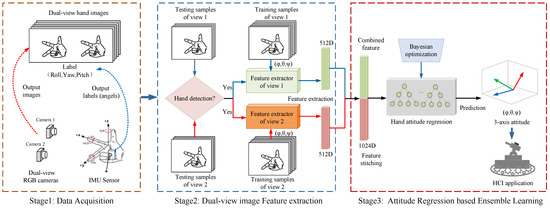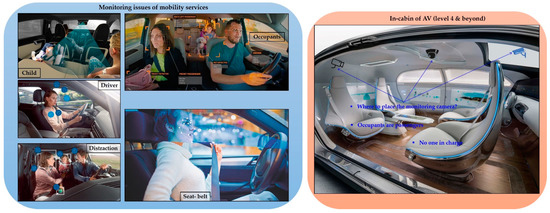3D Human-Computer Interaction Imaging and Sensing
A topical collection in Sensors (ISSN 1424-8220). This collection belongs to the section "Sensing and Imaging".
Viewed by 13947Editors
Interests: image processing and analysis; computer vision; pattern recognition; with emphasis on biomedical applications
Special Issues, Collections and Topics in MDPI journals
Interests: image processing; machine learning; computer vision; biomedical imaging; augmented/virtual reality
Special Issues, Collections and Topics in MDPI journals
Topical Collection Information
Dear Colleagues,
In recent years, the (r)evolution in sensors and sensing systems (wearable, wireless, and micro-/nanoscale), computing power (ubiquitous computing) and algorithms (real-time modeling, neural computing, and deep learning), and three-dimensional visualization has expanded. The main reasons for this trend are the ever-increasing new range of applications such as human–robot interactions, gaming, and sports performance analysis, which are driven by current technological advances.
3D imaging has also been introduced in human–computer interaction systems in the last years to address several challenges, with remarkable results. Thus, 3D imaging is important in computer vision, being used in a broad range of scientific and consumer domains, including 3D pose estimation, human action recognition, gaming, and video surveillance. The release of 3D vision sensors along with toolkit extensions that facilitate the integration of full-body control with games and virtual reality applications are the most illustrative examples of how 3D human–computer interaction imaging and sensing can be used in sensor data acquisition for 3D model visualization.
To bring together different facets of natural computer interfaces and interactions between the human and the computer, papers reporting novel imaging methods using sensors or wearable hardware are invited for submission to this Topical Collection. In particular, in this Topical Collection, we invite submissions further researching and exploring the development of new algorithms for 3D human–computer interactions. We welcome contributions that can focus on sensors, wearable hardware, algorithms, or integrated monitoring systems. The application areas include, but are not limited to, the following topics:
- 3D human–computer interaction;
- 3D human–robot interaction;
- 3D pose estimation;
- Human action recognition;
- Video surveillance;
- Scene understanding;
- Gaming;
- Sport performance analysis;
- Proxemic recognition;
- Estimating the anthropometry of a human from a single image;
- 3D avatar creation;
- Understanding the camera wearer’s activity in an egocentric vision scenario;
- Describing clothes in images;
- Mixed, augmented, and virtual reality.
Survey papers and reviews are also welcomed.
Dr. Christophoros Nikou
Dr. Michalis Vrigkas
Collection Editors
Manuscript Submission Information
Manuscripts should be submitted online at www.mdpi.com by registering and logging in to this website. Once you are registered, click here to go to the submission form. Manuscripts can be submitted until the deadline. All submissions that pass pre-check are peer-reviewed. Accepted papers will be published continuously in the journal (as soon as accepted) and will be listed together on the collection website. Research articles, review articles as well as short communications are invited. For planned papers, a title and short abstract (about 100 words) can be sent to the Editorial Office for announcement on this website.
Submitted manuscripts should not have been published previously, nor be under consideration for publication elsewhere (except conference proceedings papers). All manuscripts are thoroughly refereed through a single-blind peer-review process. A guide for authors and other relevant information for submission of manuscripts is available on the Instructions for Authors page. Sensors is an international peer-reviewed open access semimonthly journal published by MDPI.
Please visit the Instructions for Authors page before submitting a manuscript. The Article Processing Charge (APC) for publication in this open access journal is 2600 CHF (Swiss Francs). Submitted papers should be well formatted and use good English. Authors may use MDPI's English editing service prior to publication or during author revisions.
Keywords
- 3D human–computer interaction
- sensors
- wearable hardware
- machine learning
- deep learning
- 3D imaging
- mixed, augmented and virtual reality
- gaming










